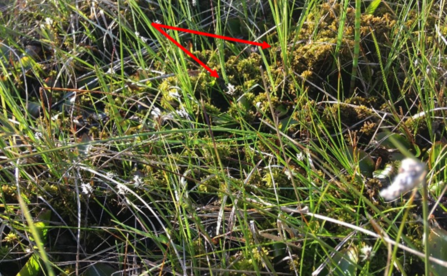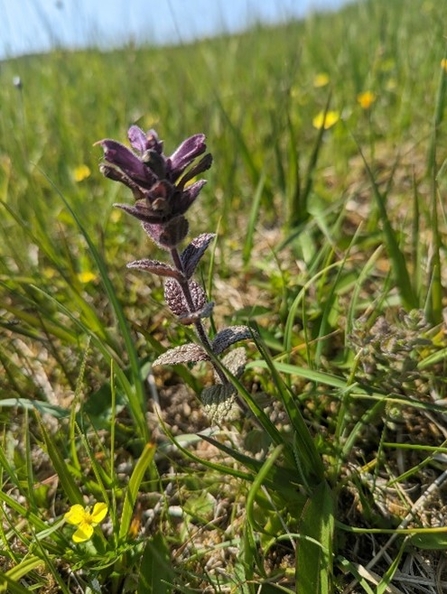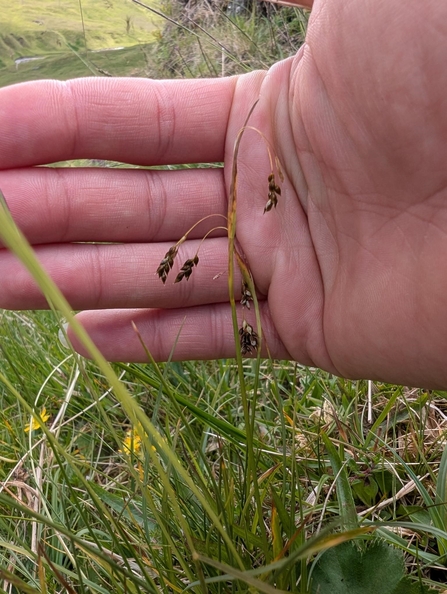When it comes to upland fen habitats it's fair to say that what I currently lack in expertise I make up for enthusiasm! My background is working on upland blanket peatlands, and like many people I found it easy to miss the small and subtle transitions in vegetation that indicated a difference in pH. Some species such as Juncus effusus are conspicuous in the upland landscape where they have strayed from wet heath into the blanket bog due to localised nutrient enrichment. These plants are often tall, so they stand out in the otherwise low vegetation. However, the species I am referring to are not strays, rather they result from changes in the nutrient content of the soil as a result of consistent flushing from rising groundwater which emerges from springs, and seeps over the surface of the habitat. They are easily overlooked as many of these species are small, including mosses, sedges and club mosses. Additionally, there are also some rare herbaceous species, some of these plants are the subject of our rare plant species showcase. These habitats are often small areas but can be identified as vegetation markedly transitions from characteristic bog or acidic heath vegetation to communities which have a higher nutrient demand.
The magical world of upland fens

Close-up of a base-rich area within an acidic mire, where we can see base preferring species (Carex dioica growing through Sphagnum contortum – indicated by the red arrows) at Tarn Moss, Cumbria. Credit: Iain Diack.
My first real field experience of these habitats came in 2023, as part of a large team which undertook a largescale survey of the Upper Teesdale area. Upper Teesdale is recognised as a nationally important floristic site containing examples of every major upland habitat type, and an array of threatened species. I was fortunate enough to be assigned to teams which were tasked with surveying a number of upland alkaline fen sites. While some had suffered from heavy overgrazing, some supported thriving communities of sedges including Carex capillaris and Carex pulicaris; lesser clubmoss (Selaginella selaginoides); and rare herbs including Alpine bartisia (Bartsia alpina), Scottish asphodel (Tofieldia pusilla) and Bird’s eye primrose (Primula farrinosa).

Bartsia alpina growing on an upland alkaline fen in Upper Teesdale, County Durham. Credit: Jess Fìor-Berry.
These tiny habitats, occurring as inclusions into larger habitats in the upland mosaic, were captivating! I was keen to learn more about their occurrence, plant communities and the threats that they face, and most importantly share this more widely. With the input of peatland experts Richard Lindsay from the University of East London and Iain Diack, Natural England, I’ve written our species showcase on rare plants which focuses on a few of the rare species which find strongholds in these habitats and the habitats themselves.

Carex capillaris showing the delicate hairlike peduncles that gives this sedge its name. The hand illustrates the usually small size of the species. Credit: Jess Fìor-Berry.
These habitats are particularly interesting because they confound our understanding of what peatlands are. They may have only extremely shallow layers of peat or in some cases peat may even be absent. However, we do know that they are an important part of upland hydrological function, with many of our streams and rivers beginning life in these tiny habitats. As an example of the challenge of identifying these fen habitats can be; in the vast Flow Country blanket peatlands we have only relatively recently discovered the occurrence of ladder fen systems and with them, populations of marsh saxifrage (Saxifraga hirculus) a species which is declining in the UK.
As the IUCN UK Peatland Programme, we aim to promote understanding of all peatland habitats and their connectedness to habitats within the wider landscape, so along with our rare plant species showcase, we are also organising a field trip at our 2025 conference and a workshop where we’ll be looking at the importance of these habitats, identifying them in the field, and considering how we can better conserve them and accommodate them in restoration planning.
